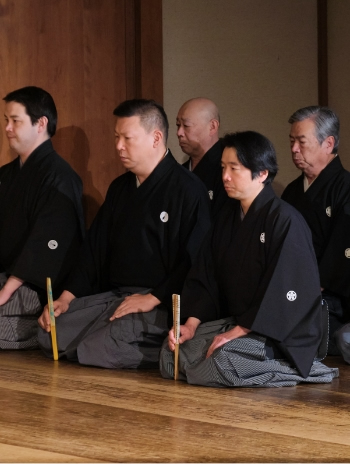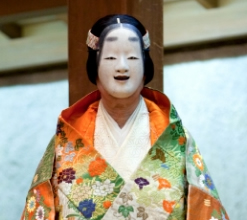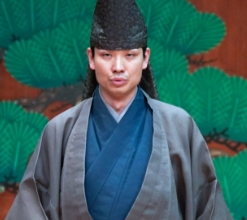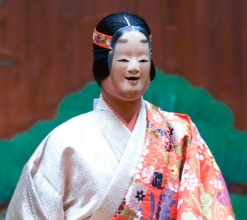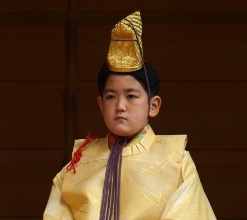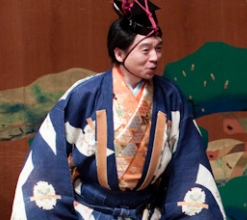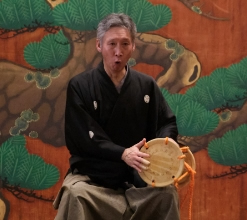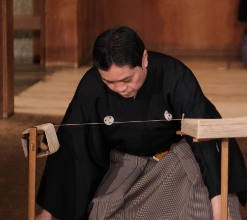
Noh Performers

Noh Performers

- The people engaged in noh are
called nohgakushi. -
Noh performers include the costumed actors—shite, waki, and kyogen—as well as the chorus members (jiutai), instrumentalists (hayashi), and the stage attendants (koken) who make sure the performance runs smoothly. Each type of actor, as well as each musician, specializes in a certain role and belongs to a specific stylistic school of their particular art.
When noh was first developed, the performers belonged to groups (za) that bore the name of the area in which they were active, such as the Yuzakiza and the Enman’iza, both areas in the Yamato (Nara) district. The numerous different groups in the Kinki area competed with each other. In the Edo period, the za came to be called ryu.
Of the five shite ryu active today, four stem from the Yamato za and can trace a continuous line of succession reaching back over more than six hundred years.

The Nohgakushi Roles
- Shite
-
The main character in noh is called the shite or “doer.” In most plays, the shite wears a mask when performing. Some noh plays have one act, while others have two. For the latter, the role of the shite in the first act is called the mae shite and in the second act the nochi shite.
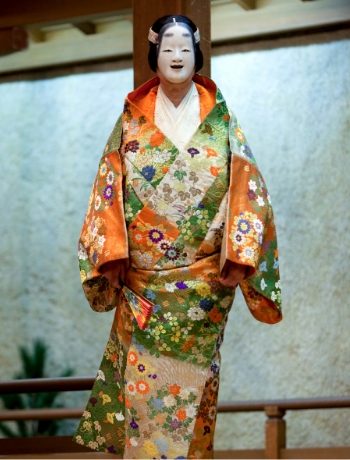
- Waki
-
The waki is the supporting role of the shite, and is a living man in the dramatic present. Many waki characters are Buddhist priests, while others are Shinto priests, government ministers, yamabushi ascetics, travelers, or warriors. None of these characters wear masks.
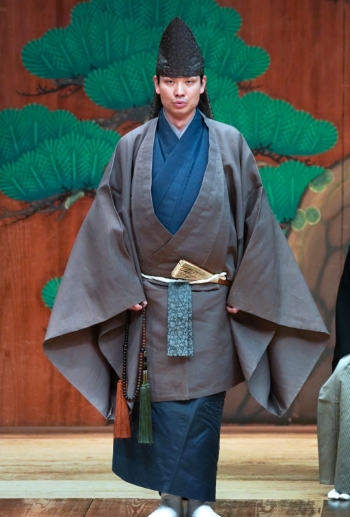
- Tsure
-
A companion role to the shite or waki is that of the “one who accompanies” (tsurete kuru). The shite companion is called a tsure while the waki companion is the waki tsure. It is common for several people to appear on stage as tsure at the same time.
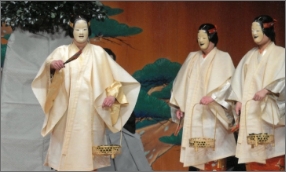
Shite (left) and two tsure (right)

- Kokata
-
A character played by a child actor. In addition to playing children, in certain cases child actors may play the role of an adult emperor or an aristocrat, representing purity and innocence.
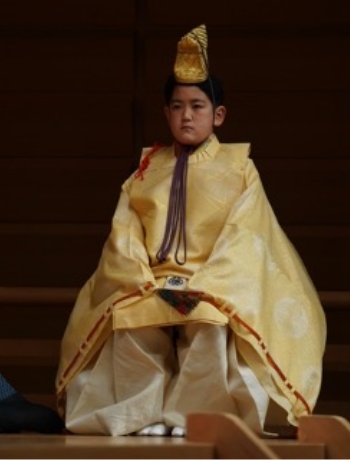
- Kyogen
-
Kyogen comedies feature a small cast, with two to four characters being the norm. The main role in kyogen is also called the shite, while the other supporting roles are called ado and koado. When a play has a large number of performers, the extra roles are known as tachishu. Hayashi instrumentalists also perform in a few kyogen.
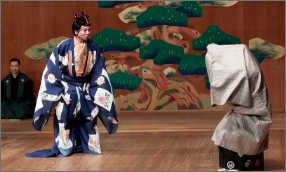
Shite (left) and Ado (right)
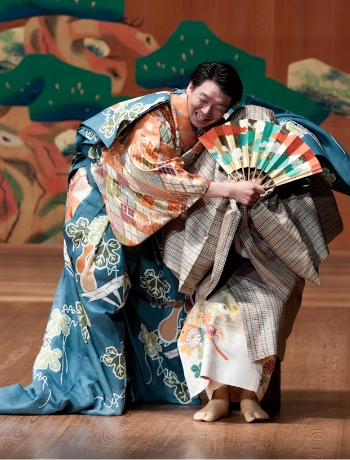
- Ai kyogen
or simply ai -
Kyogen players appeared in the noh play. In a two-act noh play, the ai connects the first and second act by relating a story in answer to the waki’s questions. The ai kyogen can also be a servant or may accompany the shite, at times adding interest and excitement to the play.
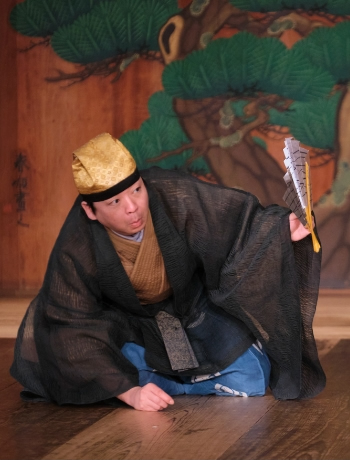
- Hayashikata
-
The ensemble consists of performers with a flute (fue), a small hand drum held to the shoulder (kotsuzumi), a large hand drum rested on the thigh (otuszumi), and a stick drum (taiko). The stick drum is only played in certain noh plays. The performers specialize in a single instrument and belong to one of several stylistic schools for that particular instrument.
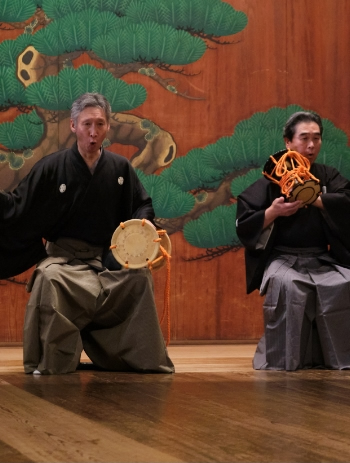
- Koken
-
The stage attendants have the job of making sure the performance runs smoothly. They set up and remove the large and small theatrical props, and they assist with on-stage costume changes. If an actor is incapacitated, the koken take up the important role of stand-in performers.
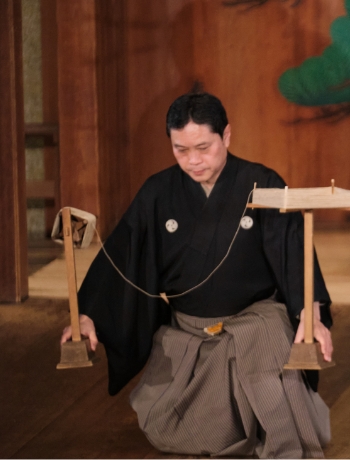
- Jiutai
-
The chorus is composed of six to ten people. They speak on behalf of the shite or waki, narrate the scene, describe the scenery, express the feelings and psychology of the characters, and convey dramatic developments to the spectators. Their function is similar to that of the chorus in ancient Greek tragedies.
